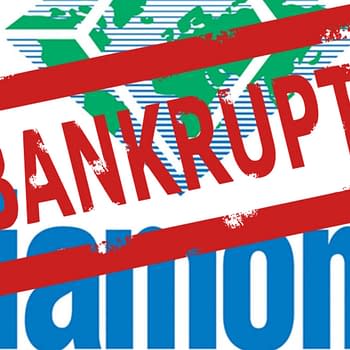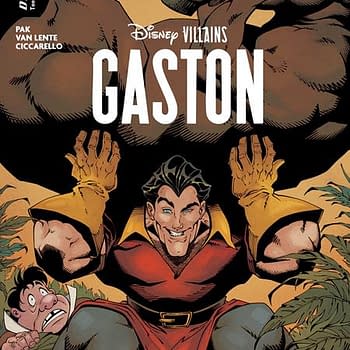Posted in: Comics | Tagged: america, Comics, eccc, entertainment, healthcare
ECCC: America, Comics And The Healthcare Gap
Bleeding Cool's Gavin Lees is at ECCC. He writes
One of the most unassuming panels in this year's ECCC program was Comics and Healthcare — with a title that was hardly inspiring, it hid what proved to be one of the most affirming studies in the power of sequential art.
The panelists were led by Meredith Li-Vollner from the communications department of King County Public Health (KCPH), and featured cartoonists David Lasky, Ellen Forney — two of Seattle's foremost cartoonists — and Emilie Bess, a first-time cartoonist.
This was not the first time this group had assembled, as Li-Vollner had been leading a book group of sorts for the last year to explore comics that deal with healthcare and illness. Included in their "syllabus" were expected titles like David B's Epileptic, and Harvey Pekar's Our Cancer Year, as well as less-known works like Ken Dahl's (aka Rob "Gabby" Schulz) Monsters, and Joyce Farmer's Special Exits. The one recurring theme that they noticed in all these books was the importance of health insurance.
As the deadline for enrolling in the Affordable Care Act approached, Li-Vollner saw an opportunity to publicise the initiative by creating stories and comics around the subject of healthcare. Looking at the, frankly cringeworthy, attempts by Washington State to promote enrollment into their healthcare exchanges, she failed to see how the videos spoke to the real target audience — immigrants and minorities. So, she set up a blog for comics that spoke to how insurance matters.
The project was, initially, a difficult sell for her, as her supervisor was skeptical that comics would be read by anyone other than children. When she performed some ground-level research, she discovered that, culturally, comics were treated very differently by immigrant groups. In their communities, comics were read at all ages, as many adults were illiterate — even in their native languages.
The comics submitted to the site dealt with real-life dilemmas, often froAMem previously-unpublished cartoonists, like Bess, whose work as an entomologist led her to an interest in illness and healthcare. Li-Vollner even tried her own hand at a strip, which dealt with the murder of her mother, and the therapy that her family received in its wake. She began to tear-up while speaking about her experiences — it was a palpably vulnerable moment that really drove home the importance of the subject to the audience.
Many of the comics on the site were cross-posted to the group's Facebook site, some of which — especially Lasky's — provoked long threads of comments. For all concerned, this was vindication that their work was fulfilling its purpose.
For Lasky, he had always wanted his comics to contribute to society in some way. This had led him to an earlier collaboration with KCPH on a pamphlet called No Ordinary Flu, which dealt with the Spanish Flu epidemic of 1918, and how a similar outbreak could occur today. Not only was this a worthy use of Lasky's talents, it was also a deeply personal project, as his great-grandmother had died in that epidemic.
What emerged from this project was that it reached immigrant populations, and other people who are not normally inclined to read information pamphlets. Its success led to nationwide distribution, and translation into 24 languages.
Forney, too, had previous cred in cartooning about illness with her 2013 memoir, Marbles. In it, she details her experiences with bipolar disorder and her road to stability. The parts of graphic novel that resonated with many readers were the visual metaphors she devised to explain the various states of mania and depression. For her, this spoke to comics' ability to reach beyond language and help readers to deeply understand complex subjects.
From their own work, and their collaborative reading, the group seemed to be moving towards establishing a graphic language of illness — contributing not only to people's understanding of health, but also to the greater idiom of cartooning itself. This subject will be explored in greater depth at the Graphic Medicine symposium in June, where Forney will be the keynote speaker.
With three days left to enroll, the panel concluded with a further prompt to anyone uninsured to enroll in the healthcare exchange. The comics4healthcoverage blog is still seeking submissions from anyone who may have a health-related story to tell in four panels.
Gavin Lees writes for Bleeding Cool Magazine and assorted other publications. He lives in Seattle.















